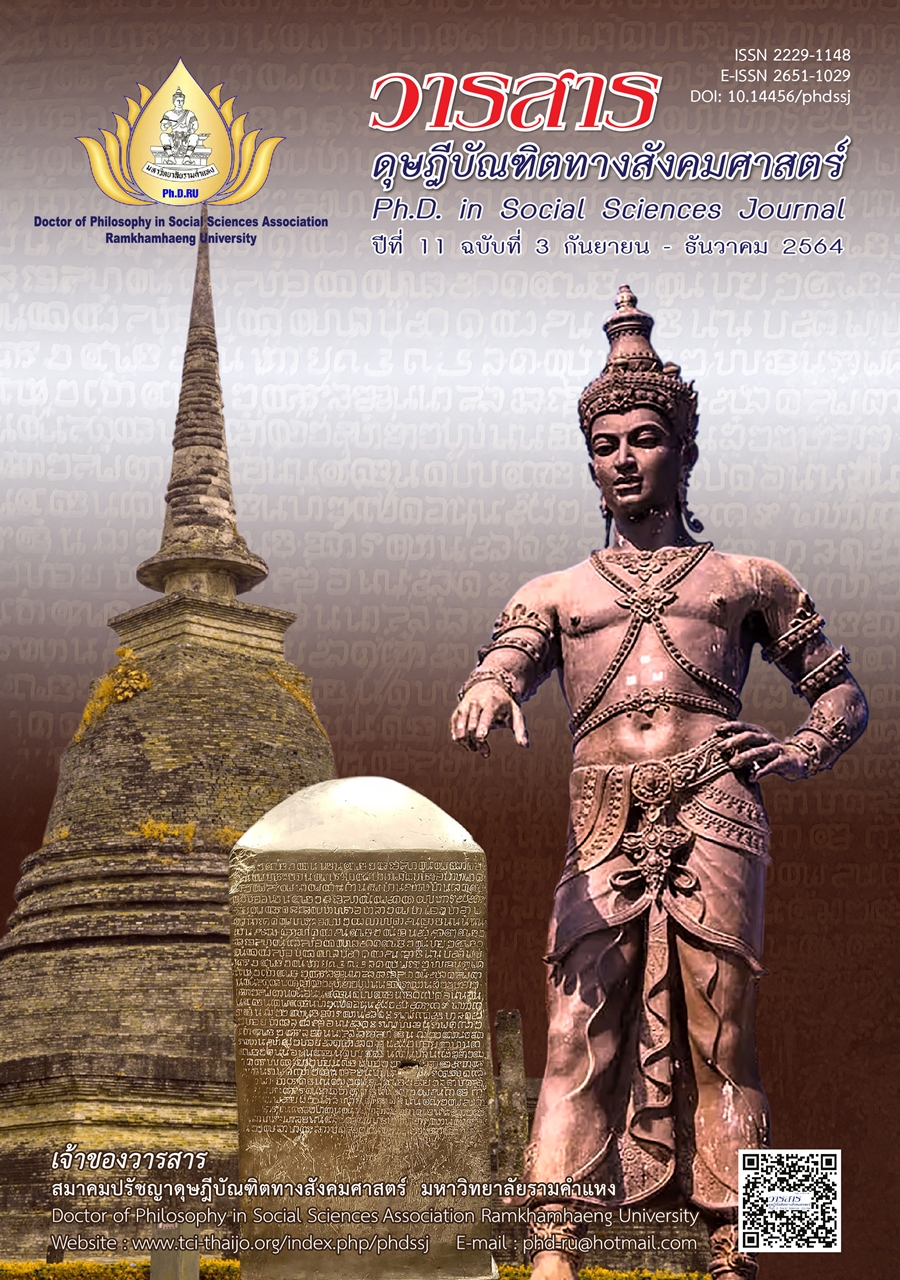Serial Mediation Effects of Leader Member Exchange and Empowerment Transmitting Ethical Leadership to Employee Voice of Private Organizations
Main Article Content
Abstract
In this research article, the researcher examines whether leader member exchange and empowerment function are latent factors connecting ethical leadership to the employee voice of private organizations, and if so, how. The researcher employed a mixed-methods research. In the quantitative research, data were collected from 500 copies of a questionnaire. The analysis was conducted using the Smart PLS 3.0 program. In the qualitative research, data were collected from the interviews with twenty subjects. The sample population for both methods consisted of employees in private organizations in the Bangkok Metropolis.
Findings showed that the path with the highest feasibility was the path of leader member exchange and empowerment as mediator variables connecting ethical leadership to employee voice. The path exhibited t value at the highest level of 5.846 (greater than 2.58) with the statistically significant level of .01. The next path with feasibility in descending order was the path of empowerment as a mediator variable connecting ethical leadership to the employee voice of private organizations. The path exhibited t value at 4.005 (greater than 2.58) with the statistically significant level of .01. Data analysis from the information obtained from the qualitative research enabled the researcher to find new knowledge that added to the research conceptual framework. It was found that the factors influencing the employee voice of private organizations that contributed to the variables in accordance with the conceptual framework were culture, job motivation, personal attitudes, and workplace environment.
Article Details
Academic articles, research articles, and book reviews in the Ph.D. in Social Sciences Journal are author’s opinions, and not the publisher’s, and is not the responsibility of the Ph.D. in Social Sciences Journal Philosophy Association, Ramkhamhaeng University. (In the case that research is done on human, the researcher has to be trained in Ethics for Doing Research on Human Training and has to produce the evidence of the training).
References
Best, J. W. (1977). Research in education (3rd ed.). Prentice Hall.
Blanchard, K., Carlos, J. P., & Randolph, A. (2001). Empowerment takes more than a minute (2nd ed.). Berrett-Koehler.
Brown, M. E., & Trevino, L. K. (2006). Ethical leadership: A review and future directions. Leadership Quarterly, 17(6), 595-616.
Cohen, J. M., & Uphoff, N. T. (1986). World development. McGraw-Hill.
Comrey, A. L., & Lee, H. B. (1992). A first course in factor analysis. Erlbaum.
Cronbach, L. J. (1990). Essentials of psychology testing (5th ed.). Harper Collins.
Detert, J. R., & Burris, E. R. (2007). Leadership behavior and employee voice: Is the door really open. Academy of Management Journal, 50(4), 869-884.
Graen, G. B., Novak, M., & Sommerkamp, P. (1982). The effects of leader-member exchange and job design on productivity and satisfaction: Testing a dual attachment model. Organizational Behavior and Human Performance, 30, 109-131.
Graen, G. B., & Uhi-Bien, M. (1995). Development of Leader-Member Exchange (LMX) theory of leadership over 25 years: Applying a multi-level domain perspective. Leadership Quarterly, 6, 219-247.
Hassan, M., Hassan, I., & Batool, F. (2015). Employee voice behaviour in organisations: Evidence from Pakistan. Asian Journal of Management Science and Applications, 2(2), 195-212.
LePine, J. A., & Van Dyne, L. (2001). Voice and cooperative behavior as contrasting forms of contextual performance: Evidence of differential relationships with big five personality characteristics and cognitive ability. Journal of Applied Psychology, 86(2), 326-336.
Lord, R., & Maher, K. (1991). Leadership and information processing: Linking perception and performance. Unwin Hyman.
Lunenburg, F. C. (2010). Leader-member exchange theory: Another perspective on the leadership process. International Journal of Management, Business, and Administration, 13(1), 1-5.
Piriyakul, M. (2019). Smart PLS for structural equation modeling. Ramkhamhaeng University, Faculty of Science. [In Thai]
Ringle, C. M., Wende, S., & Will, S. (2005). Smart PLS 2.0 (M3) Beta. Retrieved from http://www.smartpls.de
Schriesheim, C. A., Castro, S. L., & Cogliser, C. C. (1999). Leader-Member Exchange (LMX) research: A comprehensive review of theory, measurement, and data-analytic practices. Leadership Quarterly, 10(1), 63-113.
Van Dyne, L., Cummings, L., & McLean, P. J. (1995). Extra-role behaviors: In pursuit of construct and definitional clarity. In L. L. Cummings & B. M. Staw (Eds.), Research in organizational behavior (pp. 215-285). JAI Press.
Van Dyne, L., & LePine, J. A. (1998). Helping and voice extra-role behaviors: Evidence of construct and predictive validity. Academy of Management Journal, 41(1), 108-119.
Yukl, G. A. (1998). Leadership in organizations (4th ed.). Prentice Hall.


